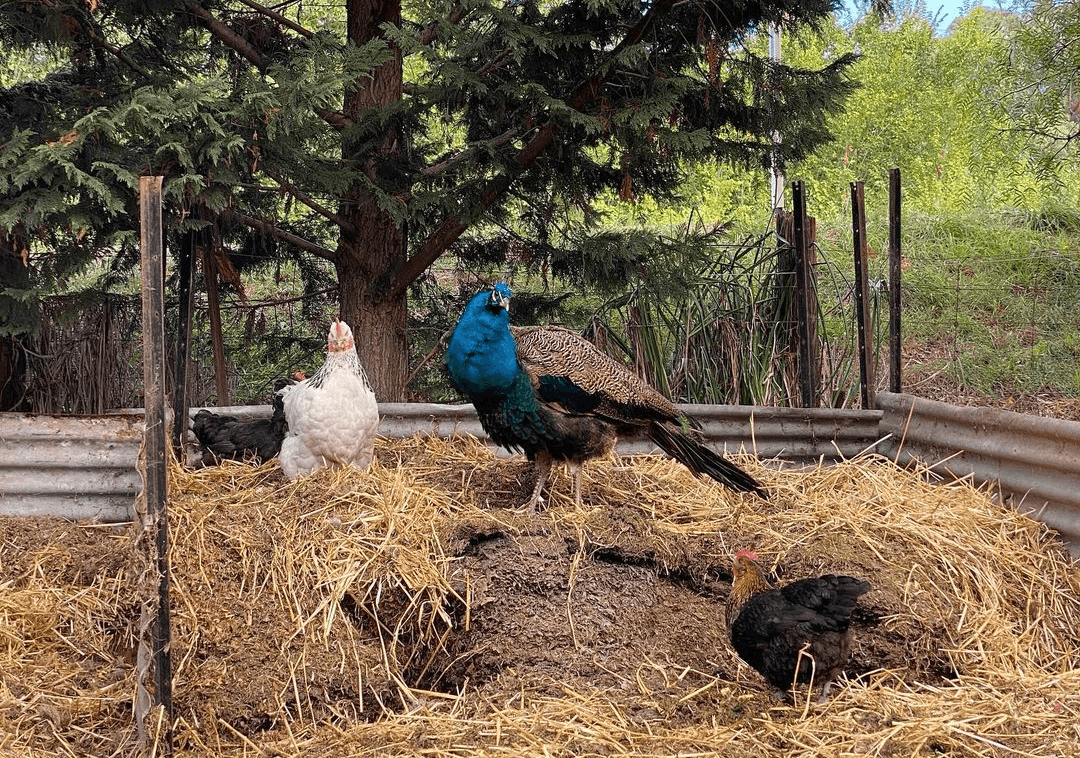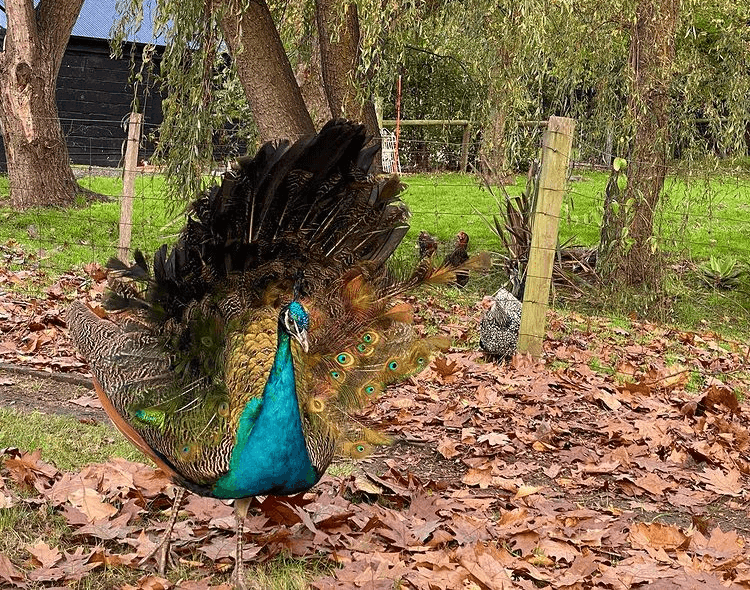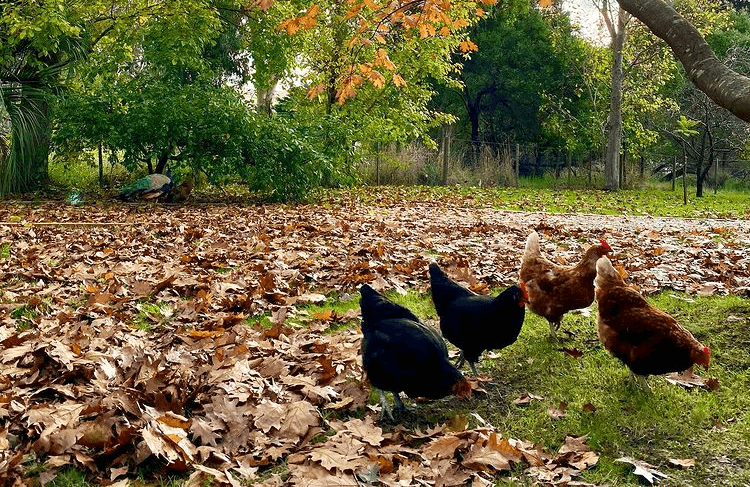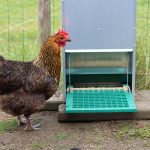Can Peacocks and Chickens Live Together?

Many backyard chicken keepers tend to house more than one sort of bird or poultry. Maybe you’re thinking about adding ducks or swans to your chicken flock. Or perhaps you’ve had some success introducing pheasants and are willing to try something new, like peafowl?
Adding different kinds of birds in the same backyard isn’t without risk. We’ll talk about all pros and cons of adding peacocks and/or peahens to your chicken flock.
Can Peacocks live with chickens?
Yes. Raising and keeping chickens and peacocks together is possible, but it’s not recommended. Chickens and peacocks are different animals with other nutritional needs and housing requirements. Furthermore, housing chickens and peafowl together gives a higher chance of transmitting diseases from one bird to another.
Most common issues to keep in mind when housing peacocks and chickens together:
- Pecking order
- Feed
- Coop and run size
- Transfer of diseases

Pecking order
We all know some animals prefer the company of others while other species choose a solitary life. Both chickens and peafowl are sociable animals and need the company of others to stay happy and healthy. A larger flock will make chickens feel right at home, while peafowl can be kept in a pair.
Being part of a flock comes with a strict pecking order. All birds are higher or lower in the pecking order, and each bird has its task in the flock. A pecking order can look cruel to us, as determining their place can be pretty violent. But this arrangement brings peace and tranquillity to the run and makes the tasks and chores understandable and clear for each flock member.
Bringing new members to your chickens’ living environment, especially when dealing with different types of animals, will shake up the pecking order and the flock. Take your time to let them adjust to each other and watch out for any kind of misbehavior or bullying. There WILL be fighting or bullying, so make sure to do everything you can to prevent things from getting out of hand.
Fights occur primarily when there is a:
- Lack in space
- Lack in feed
Peacocks need more space than chickens, and both combined are best kept free-ranging or inside a large run. Lack of space creates multiple problems, such as aggression, bullying, and a filthy living environment. They also both have different nutritional needs. You’ll need to separate them during feeding so they don’t eat each other’s food. And always provide plenty of food, as they can get cranky when hungry.
Feed
Chickens and peacocks are different animals with different nutritional needs. A peacock’s diet should contain more protein as they need the extra protein to grow their large feathers, produce eggs, and grow tissue,…
Giving the same feed to your chickens is a waste as they don’t need the extra protein, and peacock feed is more expensive than chicken feed. Separate the birds during feeding time and keep the feed locked away. Chickens and peacocks can eat kitchen scrabs, but this should only happen occasionally. Never feed your birds more than 10% of their daily food intake in snacks.
Coop and run size
Every animal, even humans, needs their personal space. When things get too crowded, it can create various health and mental issues in your birds. If you want to know the minimum requirements for a coop and run for your chicken flock, including the number of nesting boxes to provide, try out our ‘Coop Size Calculator’.
As peafowl is bigger than a normal-sized chicken, it makes sense to make a much larger run when housing the two together. Peacocks also need a bigger coop and higher roosting perches. Beware that peacocks can be very loud. They are not the best birds to be kept in a suburban neighborhood, so next to the space issues, there’s also a noise factor to keep in mind when placing peacocks in your backyard.
Run Size
A minimum of 10 feet per chicken is a good rule of thumb for chickens. But peafowl needs much more space. One peacock needs at least 80 square feet of living space. You can choose to free roam them, but unlike your chickens, they will wander off quite far and check out all neighbors’ backyards. Always check with your neighbors and local government before keeping peafowl in your backyard to prevent issues or arguments.

Unlike chickens, peafowl can jump or fly relatively high (up to 8 feet), so when keeping them in an enclosed pen, make sure to install a fence that’s at least that high.
Coop
Housing a peacock or peahen needs special attention as chickens and peafowl need their own roosting place.
For chickens, a coop should measure around 3 to 5 square feet per chicken. Place roosting bars at least 1,5 – 3 feet from ground level and provide about 8 inches of roosting bar per chicken.
Peafowl doesn’t necessarily need inside living space, but if you want to provide it to keep them safe from predators at night, at least 10 square feet per bird is required. Most peacocks sleep inside a fenced pen, on their roosting bar, or on the branch of a tree. Roosting perches should be placed relatively high, at least 5 feet from the ground.
Transfer of diseases
The main concern when housing chickens and peafowl together is the higher chances of transmitting diseases from one bird to another. Chickens are known to carry out diseases and parasites, and not all birds will show symptoms. When introducing new birds to your flock, whether they’re chickens, ducks, pheasants, or peafowl, always take the time to quarantine the new birds for at least two weeks in a separate pen before letting them join the group.
A common disease when housing chickens and peafowl is Blackhead Disease, a parasitic poultry disease caused by a protozoan called Histomonas meleagridis, spread by cecal worms. The parasite infects the cecum and liver and carries a high mortality rate. Blackhead disease symptoms are reduced appetite, lethargy, yellow diarrhea, thirst, and ruffled feathers. There are no medicines available for Blackhead Disease at this time, so preventing this parasitic disease from spreading is key.
The more animals you keep, the more issues concerning diseases will arise. Quarantine sick birds immediately and quarantine new birds for at least two weeks before introducing them to the flock.
Summary
It is possible to house both chickens and peafowl. However, there are many things to keep in mind. As they are very different animals, both need their own living space, sleeping area, food, and health care. Especially preventing the transfer of diseases such as Blackhead disease can be challenging. But there are numerous examples of animal lovers that keep both chickens and peacocks together, so if you have the time and space to make it work, you’ll enjoy these colorful birds immensely.
Credits Featured Image: @lifeatwillowcreek






















